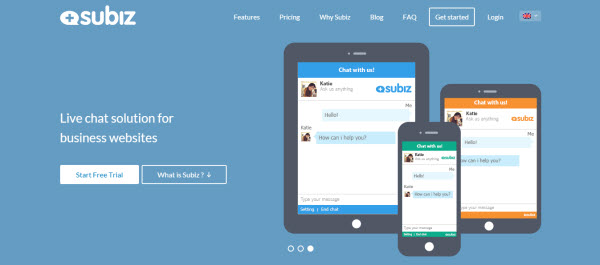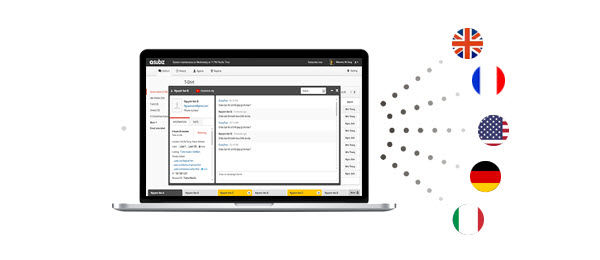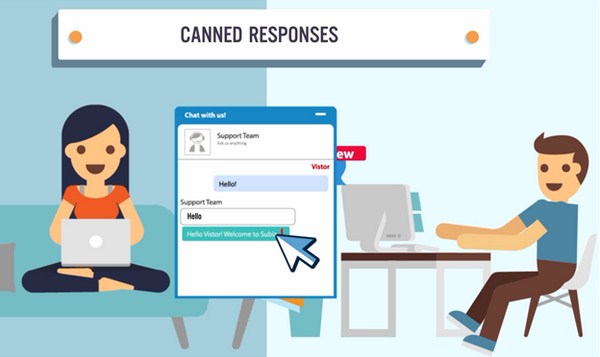You lose.
So instead of waiting for customers to take the lead in getting in touch with you, why not be proactive and send them invitation to connect with your customer service team?
Below are the best practices to turn a responsive customer service (not enough!) into a proactive customer service (hell yeah!) that drive more prospective loyal customers.
1. Read your customers! When should you be proactive?
 Okay so your goal is to transform your customer service strategy to become more proactive. Where should you start?
Okay so your goal is to transform your customer service strategy to become more proactive. Where should you start?
Look for the opportunities where you can actively show up and invite people to engage with you more. For an eCommerce website, there are plenty of places to remind visitors that they can ask you anything, anytime. One note: don’t be creepy and show up everywhere to try talking to people. They will gradually find it very annoying.
Across the life cycle of your customers, there always lie the opportunities to be proactive.
For pre-purchase stage, prospects can become customers thanks to proactivity. At purchase stage, action-driven customer support helps improve the experience of current customers and reduce the abandoned cart rate. And for post-purchase stage, proactive service maintains customer satisfaction and helps build long-term relationship with customers.
Wanna see how proactive customer service works at each stage? Scroll down to read the next part!
2. Ways to deliver proactive customer service
 a. Be proactive in recruiting customer support agents
a. Be proactive in recruiting customer support agents
You want a proactive team to implement a proactive service then you must hire members that are qualified for your company.
Take right action from the initial step like building a good team for your purpose, building a framework and setting requirements, training your agents…to ensure the whole team is capable of the task.
b. Actively manage brand-related conversations
If you have customers, chances are they might be talking about you right now. People nowadays are highly active on social channels like Facebook and Twitter. And the scary thing about social network is that things go viral easily, especially for complaints about a brand or service.
Don’t let such bad scenario happen. You can utilize tool like SocialMention to find out who are talking about you and show your presence there if monitoring a complaint is needed.
c. Have live chat available on your website
 Where would your customers turn to when they have a pre-sales question? They won’t use contact form or open a new thread in the forum or go searching in the FAQs to find the answers. All those methods waste their time.
Where would your customers turn to when they have a pre-sales question? They won’t use contact form or open a new thread in the forum or go searching in the FAQs to find the answers. All those methods waste their time.
Instantly provide them the answers, even ask them if they have any questions so you’re here to help is way better and motivate visitors to buy more effectively. Have a live chat software like Subiz installed on your site and customize some chat triggers, your customers will be happy to accept your chat invitation if they want to ask anything. They know you’re always ready to answer them!
d. Build an effective frequently asked question system
Survey showed that 57% of customers will leave online purchase if they find it hard to get the information they want about the product or service. So, together with live chat support, you need to have a rich library of most-asked questions for both customer support team and your customers to use when in need.
You can spice up the boring text by some videos of webinar or tutorials with product video. Believe me, your customers will thank you for doing this!
e. Track how customers use your website
![]() Why? By understanding customer’s behaviors on your site, you’ll know where your customers come from, from which landing page, which products get the most views, what buttons attract customers to click on, what doesn’t make them stay, etc. Tools like Google Analytics and CrazyEgg will help you with all of these data.
Why? By understanding customer’s behaviors on your site, you’ll know where your customers come from, from which landing page, which products get the most views, what buttons attract customers to click on, what doesn’t make them stay, etc. Tools like Google Analytics and CrazyEgg will help you with all of these data.
For example, your fashion shop has discounted summer sunglasses most viewed this month. However, the number of purchases for these sunglasses is only 5% of the total views. You’ll have to discover why people viewed the products but didn’t buy them. Is it because of unexpected fee in the checkout? Then provide a better explanation of the costs or live support at checkout stage for prospective customers.
f. Ask for customer’s feedback
To make satisfaction go up to the fullest, you must understand how customers think about your service and product after visiting or purchasing from your site.
You can use survey in email, or a live chat survey, or on-site popup survey to investigate what you’ve been doing right and what you have not. Customer’s feedback is the surest way to actively improve the service’s quality and retain customers.
3. How to be effective in applying proactive customer service?
 To make customers say “Wow” when being on and off your eCommerce site needs a lot of right efforts.
To make customers say “Wow” when being on and off your eCommerce site needs a lot of right efforts.
All the methods listed above might not be utilized properly if you don’t know how to boost their efficiency. So, to cut it short, here are the final checklist of things you should be aware of to run a successful and effective proactive customer service:
- Define the most popular problems that customers encounter when surfing your website, during purchase and during checkout
- Re-design the website’s elements like call to action buttons, shipping and delivery policy, live chat custom invitation, etc. for higher engagement from customers
- Test out the changes and new ideas before applying
- Measure the effectiveness of the changes and evaluate the performance of your customer support team overall. Adjust to fit.
Summing up
Anticipating customers on your site is something any customer service team must be capable of. With the how-to guides above, I hope that now your team knows how to engage with customers actively with compassion, not with sales purposes.
What do you think? Anything worth adding here but I missed? Feel free to add your opinion in the comment section below!




